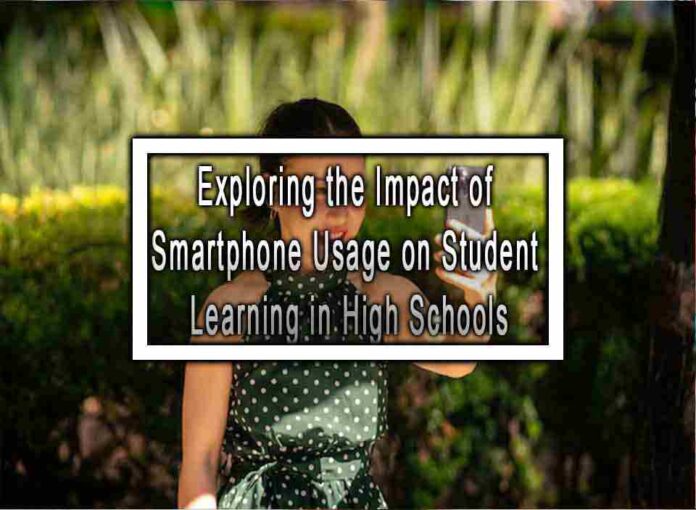The widespread use of smartphones among high school students has had both positive and negative impacts on their learning experiences. While smartphones offer access to a vast amount of information and educational resources, they also pose potential distractions and challenges to effective learning. Let’s explore the impact of smartphone usage on student learning in high schools:
Positive Impact:
1. Access to Educational Resources:
Smartphones provide students with instant access to educational apps, e-books, online courses, and educational videos. This access to information can supplement traditional classroom learning and promote self-directed learning.
2. Digital Learning Tools:
Various educational apps and platforms on smartphones offer interactive learning experiences, quizzes, and study aids that can enhance students’ understanding of subjects.

3. Connectivity and Collaboration:
Smartphones facilitate communication and collaboration among students, enabling them to work together on group projects, share notes, and exchange ideas beyond the confines of the classroom.
4. Time Management:
Some students use smartphone apps to manage their schedules, set reminders, and stay organized, which can improve their time management skills and reduce stress.
Negative Impact:
1. Distractions:
One of the most significant challenges of smartphone usage in high schools is the potential for distractions during class time. Students may be tempted to check social media, play games, or engage in non-academic activities during lessons.
2. Reduced Attention and Focus:
Frequent smartphone use can lead to reduced attention spans and difficulties in maintaining focus on classroom activities and lessons.
3. Academic Integrity Concerns:
Smartphones can facilitate cheating and academic dishonesty during tests and exams through unauthorized access to information or communication with others.
4. Sleep Disruption:
Excessive smartphone use, especially before bedtime, can disrupt students’ sleep patterns, leading to fatigue and reduced academic performance.
5. Cyberbullying and Social Pressures:
The use of smartphones also brings potential risks such as cyberbullying and peer pressure, which can negatively impact students’ emotional well-being and academic engagement.
Strategies to Mitigate Negative Impact:
1. Establishing Smartphone Policies:
Schools can implement clear smartphone usage policies, outlining when and where smartphones can be used during school hours.
2. Digital Literacy Education:
Introducing digital literacy programs can help students understand responsible smartphone use and the importance of managing screen time effectively.
3. Utilizing Classroom Technology:
Teachers can incorporate smartphones as educational tools in their lesson plans, encouraging productive use during class activities.
4. Parental Involvement:
Parents can play a crucial role in monitoring and guiding their children’s smartphone usage to ensure a healthy balance between academic and recreational activities.
5. Focus on Active Learning:
Encouraging interactive and hands-on learning experiences in the classroom can keep students engaged, reducing the temptation to use smartphones for non-academic purposes.
The impact of smartphone usage on student learning in high schools is complex, with both positive and negative aspects. By understanding these impacts and implementing appropriate strategies, educators and parents can harness the benefits of smartphones while mitigating potential drawbacks to support students’ overall academic success and well-being.










